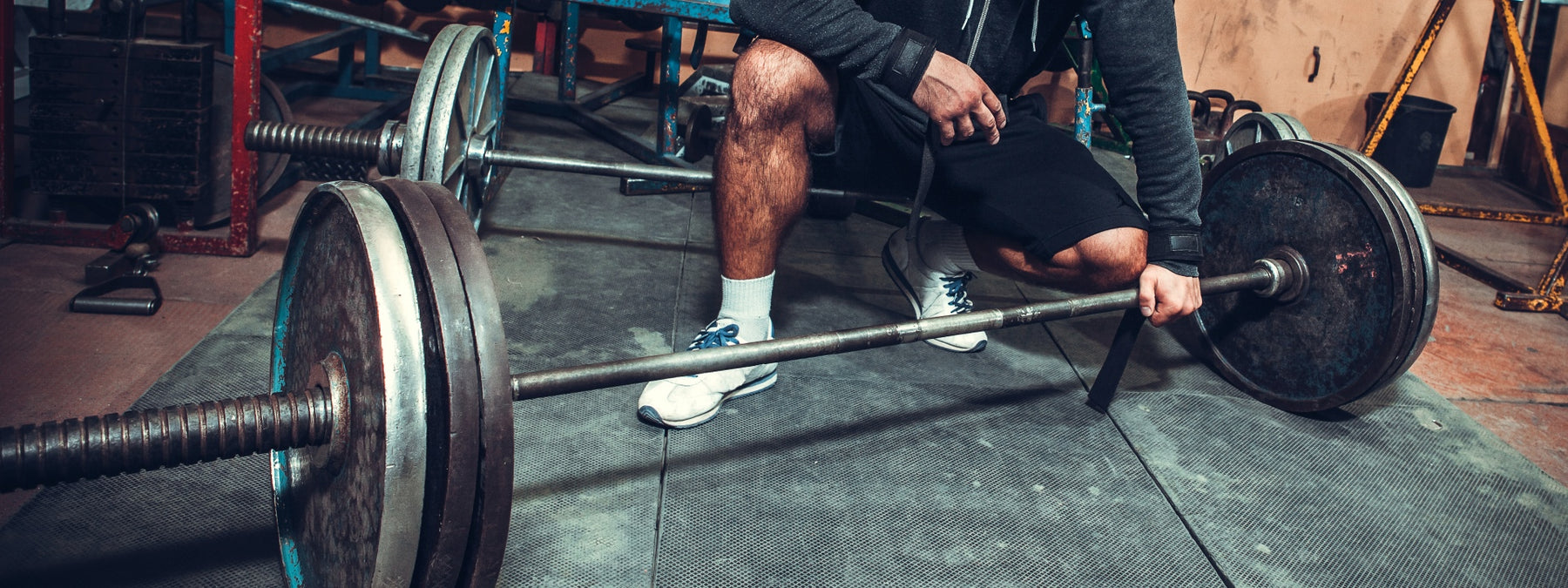
How to Perform the Yates Row, or Reverse Grip Bent Over Row
The Yates row was popularized by & named after 6x Olympia winner Dorian Yates. It is an excellent compound barbell lifts for building sweeping lower lats and thick, beefy traps. This movement is a horizontal pulling exercise commonly placed on back days (if following a traditional bodybuilding split) or pull days (if following a push/pull/legs split).
This free-weight barbell exercise works the entire back, and more. Simply put, the Yates row is similar to the barbell row except you'll grasp the bar with a supinated (underhand grip), will have a slightly more upright torso (~30o angle with the floor), and you will pull the bar to your lower abs.
Yates was known to use this row variation to emphasize lower lat, trapezius, and upper back involvement.
MTS Nutrition CEO Marc Lobliner explains how to perform the Yates row, or reverse grip barbell row.
How to Perform the Yates Row
If this is your first time performing the exercise, pick a conservative weight you can safely lift for 8-12 repetitions. It is acceptable to start with only the barbell itself. In short, the barbell tracks like a reverse flat bench press.
Approach the bar with a hip-width stance. This stance is slightly narrower than the one used for traditional barbell rows; for some it's their conventional deadlift stance. Your toes should be pointing forward or slightly outwards.
Grasp the bar with a supinated grip (palms facing towards you) slightly wider than hip-width. This will be narrower than the one used for traditional barbell rows. If your grip is too wide you'll significantly decrease your range-of-motion. If your grip is too narrow then your elbows may hit your legs during the pulling portion.
To begin the set pick up the barbell in a deadlift-like motion; you should be standing upright and bar should be about mid-thigh. While keeping your feet planted rigid, hinge your torso forward to roughly a 30 degree angle while maintaining a slight knee bend .
Your torso will be more upright for Yates rows compared to traditional barbell rows.
Too much forward lean can place excessive torque on your lower back. Similar to barbell rows the bar will not touch the ground after every rep; this keeps tension on the lats and forces as isometric contraction of the back to stabilize the torso.
Before beginning the Yates row, or any row for that matter, ensure your neck remains in-line with the rest of your body for the duration of each set. The best cue to maintain a neutral neck position and spine is to look at and pretend there's an imaginary object 10 feet in front of you on the floor. Looking down may lead to a rounded lower back and looking up may lead to a strained neck.
Your lower back and spine tend to follow your eyes.
Initiate the pull by flexing the lats and pulling your elbows back. Use your arms as levers for transferring power from your lats to the bar. As you begin pulling your shoulder blades should start retracting the bar will move closer to your body.
Pull the weight towards your lower abdominal, which for most is at or slightly below the belly button. The bar does not have to touch your body for a rep to count; instead focus on ensuring the proper muscles are firing. There should be no excessive body English (swaying, jerks, swinging, etc...) to complete the rep.
Mentally, imagine as if you are pulling the bar around your spine to fully activate your lats.
Once you get a nice contraction, slowly lower the bar back to the starting position maintaining your core tightness.
As with any exercise, the two most important components are high-quality form and progression. Progression can take a variety of forms (e.g. more weight, sets, or reps, decreased rest period, improved rep quality, etc...) but strive to improve every time you walk in to the gym.
Yates Row Form Tips
Strap Up - If your grip gives out before your back and biceps then don't be afraid to use straps. Yates rows are a back and trap-building rather than a grip-building exercise.
Go Thumbless - Some people find they are able to improve lat and overall back engagement, decrease arm involvement, and pull more weight using a thumbless grip. Wrap your thumb under the bar, alongside the rest of your fingers.
Avoid Momentum - Control the bar path during each repetition. Do not allow momentum to make the movement easier unless you are performing an advanced technique like forced reps. Avoid rocking back during the pulling portion of the exercise otherwise the emphasis will move off the lats and on to the lower back.
Keep the Lower Back Neutral - Brace your abdominals for impact, as if you're about to get punched. This tensing of the midsection will ensure your lower back stays neutral and doesn't end up excessively arched or rounded.

Leave a comment